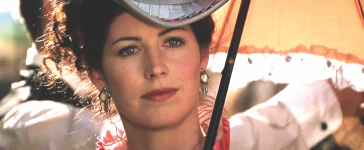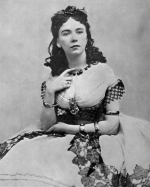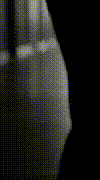quinn65
Verified
- Joined
- Sep 30, 2001
- Messages
- 1,574
- Points
- 113
I have some obsessions, and besides bondage and tickling, they include good westerns and Dana Delany.


Not long ago I re-watched the movie Tombstone, the one with Dana (as Josephine Marcus) and Kurt Russell and Val Kilmer, and an idea got into my head: What if, some years along from the movie, Josephine was talked into or sought out treatment for "female hysteria"?

That's another obsession on my list. Man, to have been a doctor around the turn of the last century... 🙂
So, this story is a work of historical fiction. Some of its settings and characters are drawn from real life, but the events themselves are imagined, weaving together threads of documented history, real medical practice, and wishful thinking.
Josephine Marcus was indeed a real woman. Most famously known as the longtime companion and common-law wife of Wyatt Earp, she was a spirited and independent figure who spent her early years performing with a traveling theater company. After Tombstone, her trail grows hazy, but my light research shows her living for a while in San Diego and San Francisco, then later traveling with Wyatt to Nome, Alaska for the gold rush there and subsequently returning with him to the "lower 48" via Seattle, where I imagine her growing restless and striking out on her own. This story imagines a brief escape taking her in 1899 to New Orleans, a city then as decadent as it was dangerous. (I don't know if she ever really took trips away like this, but she was living with Wyatt at the time of his death on January 13, 1929.)
Lulu White, also a real historical figure, was among the most notorious madams of Storyville, New Orleans’ legally sanctioned red-light district. Her famous brothel, Mahogany Hall, catered to an elite clientele and stood as a symbol of wealthy decadence. The opulence of her establishment and the glamour of her girls are grounded in archival descriptions. Google away. 😉
The broader backdrop of the story is similarly authentic:
I hope you enjoy the story. I will post it in parts, as usual. Also, as usual, it's pretty long and there's a lot of development leading up to the "good stuff," so I hope you don't mind that. It's still a work in process, but I'll post sections as quickly as I'm able.
Best,
-Q.


Not long ago I re-watched the movie Tombstone, the one with Dana (as Josephine Marcus) and Kurt Russell and Val Kilmer, and an idea got into my head: What if, some years along from the movie, Josephine was talked into or sought out treatment for "female hysteria"?

That's another obsession on my list. Man, to have been a doctor around the turn of the last century... 🙂
So, this story is a work of historical fiction. Some of its settings and characters are drawn from real life, but the events themselves are imagined, weaving together threads of documented history, real medical practice, and wishful thinking.
Josephine Marcus was indeed a real woman. Most famously known as the longtime companion and common-law wife of Wyatt Earp, she was a spirited and independent figure who spent her early years performing with a traveling theater company. After Tombstone, her trail grows hazy, but my light research shows her living for a while in San Diego and San Francisco, then later traveling with Wyatt to Nome, Alaska for the gold rush there and subsequently returning with him to the "lower 48" via Seattle, where I imagine her growing restless and striking out on her own. This story imagines a brief escape taking her in 1899 to New Orleans, a city then as decadent as it was dangerous. (I don't know if she ever really took trips away like this, but she was living with Wyatt at the time of his death on January 13, 1929.)
Lulu White, also a real historical figure, was among the most notorious madams of Storyville, New Orleans’ legally sanctioned red-light district. Her famous brothel, Mahogany Hall, catered to an elite clientele and stood as a symbol of wealthy decadence. The opulence of her establishment and the glamour of her girls are grounded in archival descriptions. Google away. 😉
The broader backdrop of the story is similarly authentic:
- Storyville was established in 1897 as an official vice district in an effort to contain prostitution, with elaborate mansions, professional sex workers, and a thriving economy.
- The amount of $300 in 1899 is equivalent to over $10,000 today, depending on the inflation measure you choose.
- The so-called treatment of “female hysteria” was fascinatingly (and tragically) real. Diagnoses of hysteria were commonly given to women exhibiting symptoms ranging from anxiety and sexual frustration to grief and nonconformity. One popular “treatment” was pelvic massage by physicians, intended to induce a “hysterical paroxysm”—what we would today simply call an orgasm. Early devices such as vibrators were developed to ease the burden on doctors’ hands, and their clinical use was cloaked in language of medicine. Women were sometimes restrained for the procedure.
- Tulane University’s Medical Department, established in the 1830s, was a prominent center of medical training in New Orleans by the 1890s. Its main facilities were located downtown, less than a mile from Storyville and Mahogany Hall. Tulane offered formal instruction in anatomy, gynecology, and “nervous disorders,” with the era’s accepted medical practices toward treating women with hysteria likely promoted as described herein. Setting aside the degree of restraint, the story’s depiction of Dr. Duvall's approach and setting, including under the specific pedagogical circumstances described in the story, is not at all implausible for the time.
I hope you enjoy the story. I will post it in parts, as usual. Also, as usual, it's pretty long and there's a lot of development leading up to the "good stuff," so I hope you don't mind that. It's still a work in process, but I'll post sections as quickly as I'm able.
Best,
-Q.
Last edited:



 Thanks for both the story and the historical background that you posted above it.
Thanks for both the story and the historical background that you posted above it. 


